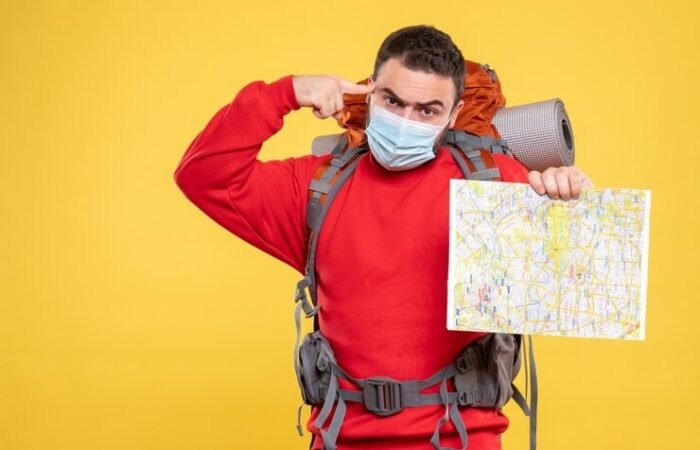You’ve spent months planning your dream vacation, meticulously crafting an itinerary filled with iconic landmarks, mouthwatering culinary experiences, and breathtaking attractions. But as you step off the plane and immerse yourself in your new travel destination, you quickly realize that the reality might not live up to your expectations. Welcome to the world of tourist traps – those pesky and overpriced gimmicks designed to separate you from your hard-earned cash.
Don’t worry, though! This comprehensive guide will equip you with the insider tips and tricks you need to outsmart the tourist traps and make the most of your travel adventure.
Key Takeaways
- Understand what tourist traps are and why they’re important to avoid.
- Learn strategies to outsmart these traps and have an authentic travel experience.
- Gain practical tips for navigating specific tourist trap scenarios.
- Discover the impact of over-tourism and the importance of responsible travel practices.
Picture this: you’re strolling through a bustling city, captivated by the sights and sounds, when suddenly a friendly local approaches you with a “free” gift. Seems harmless, right? Wrong! This is just one example of a classic tourist trap – an ingenious ploy to lure unsuspecting travelers into parting with their cash.
Tourist traps come in many forms, from overpriced restaurants catering heavily to tourists to suspiciously helpful “guides” offering to lead you to hidden gems (for a fee, of course). While these traps may seem innocent enough, they can quickly drain your travel budget and leave you with a sour taste in your mouth.
But fear not, fellow adventurers! By understanding the tactics used by these traps and arming yourself with the right strategies, you can navigate your way to an unforgettable and authentic travel experience.
Understanding Tourist Traps
Common Types of Tourist Traps
Tourist traps come in many shapes and sizes, but some of the most common ones include:
- Overpriced restaurants near major tourist attractions, offering mediocre food and inflated prices.
- Gift shops peddling cheap souvenirs at exorbitant prices.
- Pushy street vendors selling counterfeit goods or trinkets.
- Taxi drivers taking the long route or using “broken” meters to overcharge you.
- “Free” tours or activities that turn out to be sales pitches for expensive services.
- How Tourist Traps Exploit Travelers
Tourist traps rely on a variety of tactics to separate you from your money:
- Preying on your lack of local knowledge: As a visitor in a new country or city, you’re an easy target for scams and overpriced services.
- Creating a sense of urgency: They’ll use phrases like “once-in-a-lifetime opportunity” or “limited-time offer” to pressure you into making impulsive purchases.
- Capitalizing on your desire for authenticity: They’ll promise to show you “hidden gems” or “local secrets” that turn out to be overpriced and underwhelming.
- Exploiting your fear of missing out (FOMO): They’ll make you feel like you’re missing out on a truly unique experience if you don’t take their offer.
Fortunately, with a little preparation and awareness, you can beat these traps at their own game.
Strategies to Outsmart Tourist Traps
- Research Your Destination Thoroughly
Before you even step foot in your travel destination, do your homework. Spend time researching the must-see attractions, reputable restaurants, and local customs. Utilize travel guides, online forums like TripAdvisor, and trusted websites to gather insider information.
By having a solid understanding of what to expect, you’ll be better equipped to spot potential tourist traps and steer clear of them. Don’t just rely on the first Google search result – dig deeper and cross-reference multiple sources for a well-rounded perspective.
2. Seek Recommendations from Locals
One of the best ways to uncover hidden gems and avoid tourist traps is to tap into the local knowledge. Engage with locals – whether it’s your Airbnb host, a friendly barista, or a knowledgeable concierge – and ask for their recommendations on authentic restaurants, off-the-beaten-path attractions, and ways to avoid tourist scams.
Locals know their city inside out and are often eager to share their favorite spots that don’t cater heavily to tourists. Plus, they can warn you about common traps and share their personal experiences, helping you navigate your new surroundings like a pro.
3. Set a Budget and Stick to It
Before embarking on your journey, establish a realistic travel budget that accounts for your expenses, including accommodations, transportation, food, and activities. Once you’ve set this budget, be disciplined and resist the temptation to overspend, even when faced with persuasive sales tactics.
Tourist traps thrive on impulsive purchases and luring travelers into spending more than they intended. By sticking to your predetermined budget, you’ll be less susceptible to these tactics and can make more mindful decisions about where to allocate your funds.
4. Trust Your Instincts
As a savvy traveler, one of your most valuable assets is your intuition. If something seems too good to be true or you feel pressured into making a purchase, trust your gut instinct and walk away.
Tourist traps often rely on high-pressure sales tactics and a sense of urgency to coerce you into buying goods or services. If you find yourself in a situation that doesn’t feel right, politely decline and remove yourself from the situation. Remember, you’re in control, and no one should make you feel obligated or uncomfortable.
5. Venture Off the Beaten Path
While iconic tourist attractions are certainly worth visiting, some of the most memorable travel experiences can be found off the beaten path. Explore lesser-known neighborhoods, seek out local markets, and immerse yourself in the authentic culture of your destination.
By venturing away from the heavily touristed areas, you’ll not only avoid the traps that prey on unsuspecting visitors, but you’ll also discover hidden gems that offer a more genuine and enriching experience. Plus, you’ll have the opportunity to support local businesses and interact with locals in a more authentic way.
6. Avoid Overly Aggressive Sellers
Street vendors can be a part of the vibrant culture in many travel destinations, but some can be overly persistent and use aggressive tactics to make a sale. If you encounter a vendor who won’t take no for an answer or tries to guilt-trip you into buying their merchandise, politely but firmly decline and walk away.
Remember, you’re under no obligation to purchase anything, and giving in to these tactics only encourages future aggressive behavior. If the situation escalates, don’t hesitate to seek assistance from local authorities or your hotel staff.
Specific Tourist Trap Scenarios and How to Navigate Them
- Broken Taxi Meters
One common tourist trap involves taxi drivers claiming their meter is “broken” and attempting to overcharge you for the ride. To avoid this, research the approximate fare for your destination before getting into a taxi, and agree on a fixed price with the driver upfront. If they insist on using the meter, politely decline and find another cab.
2. “Free” Trinket Routines
Be wary of individuals offering you “free” trinkets or souvenirs on the street. These are often ploys to lure you into buying overpriced goods or coerce you into paying for the “free” item. If someone tries to give you something unsolicited, politely decline and keep walking.
3. Suspiciously Helpful Bag Handlers
While most bag handlers at airports or train stations are legitimate, some may try to “help” you with your luggage and then demand an exorbitant tip. To avoid this, keep a firm grip on your belongings and politely decline any unsolicited assistance.
4. Pushy Street Vendors
Street vendors can be persistent, using high-pressure tactics to sell their wares. To navigate this situation, be polite but firm in declining their offers. If they continue to harass you, walk away and don’t engage further.
The Dark Side of Over-Tourism
While the focus of this guide has been on avoiding tourist traps for your own benefit, it’s important to recognize the broader impact that over-tourism can have on destinations. Tourist traps are often a symptom of a larger issue – the strain that an influx of visitors can place on local communities and their resources.
As more and more travelers flock to popular destinations, the demand for tourist services and attractions increases, leading to the proliferation of tourist traps and the commodification of local cultures. This can have a detrimental effect on the authenticity of a place, as businesses cater more to the desires of tourists than the needs of locals.
Additionally, over-tourism can lead to environmental degradation, overcrowding, and the displacement of local residents as property values skyrocket and neighborhoods become gentrified.
| Impact of Over-Tourism | Description |
|---|---|
| Environmental Degradation | Increased pollution, waste, and strain on natural resources due to high tourist volumes. |
| Loss of Authenticity | Local cultures and traditions are commodified and adapted to cater to tourist expectations. |
| Overcrowding | Popular attractions become overwhelmed, leading to a diminished experience for visitors and locals alike. |
| Rising Living Costs | Influx of tourists drives up property values and cost of living, pricing out local residents. |
| Strain on Infrastructure | High tourist volumes can overwhelm local infrastructure, such as transportation and utilities. |
As responsible travelers, it’s crucial to be mindful of our impact and strive to minimize our contributions to over-tourism. By prioritizing sustainable and ethical travel practices, we can help preserve the authenticity and integrity of the destinations we visit.
Some ways to practice responsible travel include:
- Visiting during the low season: This can help distribute tourism more evenly throughout the year and reduce overcrowding.
- Supporting local businesses: Patronize family-owned restaurants, shops, and accommodations to keep tourism revenue within the local community.
- Respecting local customs and cultures: Educate yourself on local traditions and etiquette to ensure you’re being respectful and not contributing to the commodification of cultures.
- Minimizing your environmental footprint: Reduce waste, conserve water and energy, and support eco-friendly initiatives when possible.
- Exploring lesser-known destinations: Venture off the beaten path to distribute tourism more evenly and discover hidden gems.
By being mindful of our actions and embracing responsible travel practices, we can not only avoid tourist traps but also contribute to the preservation of the destinations we love.
Conclusion
Traveling is one of life’s greatest adventures, offering the opportunity to immerse yourself in new cultures, create lasting memories, and broaden your horizons. However, falling victim to tourist traps can quickly turn your dream vacation into a costly and disappointing experience.
By following the strategies outlined in this guide, you’ll be equipped with the knowledge and tools to outsmart these traps and prioritize authenticity in your travels. Remember, the key is to do your research, trust your instincts, and embrace the spirit of responsible and mindful travel.
Whether you’re seeking out hidden gems, engaging with locals, or simply savoring the sights and sounds of your destination, you’ll be able to fully appreciate the richness and beauty of your journey without the burden of tourist traps weighing you down.
So, fellow adventurers, go forth and explore with confidence, knowing that you have the power to avoid tourist traps and create unforgettable, authentic travel experiences. Happy and responsible travels!








No Comment! Be the first one.